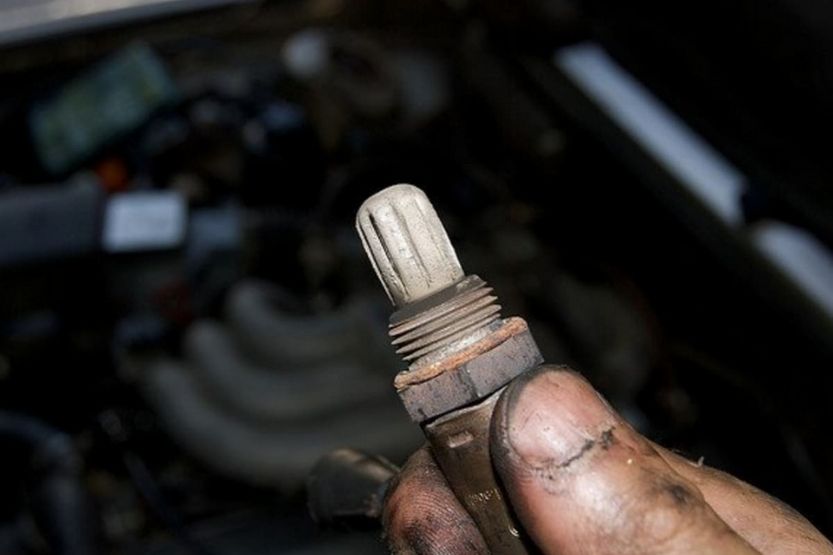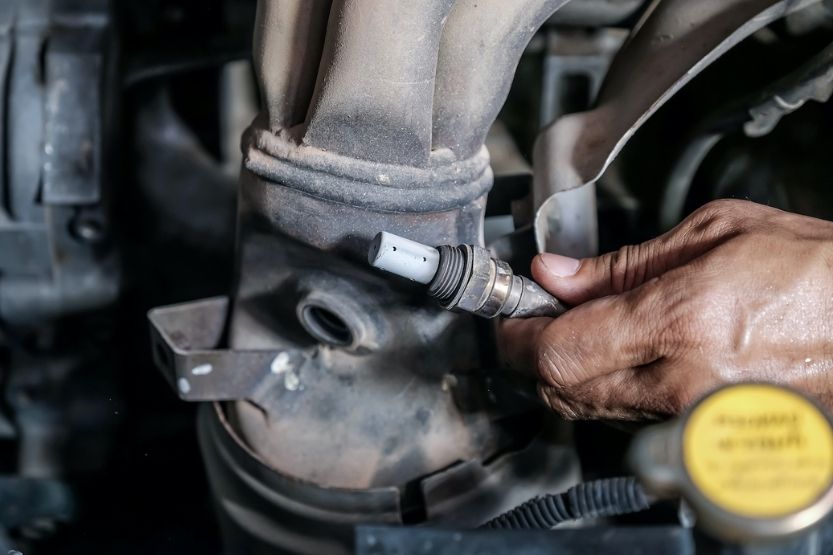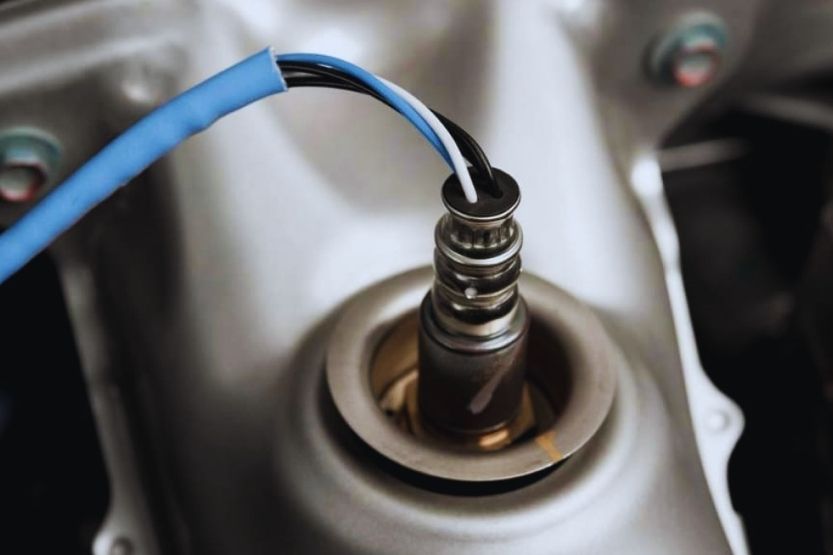If your car has a bad oxygen sensor, the “Check Engine” light on your dashboard will begin to glare at you. It’s a mystery device for most drivers, but it shouldn’t be for you. In this article, I will show you how to fix a bad O2 sensor.
In reality, you cannot fix a malfunctioning O2 sensor. The only practical thing you can do is replace it. This sensor is made of materials and technology that are impractical to repair. This issue is relatively easy to diagnose, and the O2 sensor is straightforward to replace. It doesn’t cost too much as well.
Replacing a bad oxygen sensor is fairly easy for most vehicles. You only need ordinary mechanics’ tools to do it. However, if you are not used to doing such things, you can ask a qualified mechanic to do it for you.
Read on to learn more about how to fix a bad O2 sensor and the reasons why O2 sensors go bad.
How to Fix a Bad O2 Sensor

So, we’re now at the point of really showing you how to fix a malfunctioning O2 sensor. You now know that they are located at the exhaust line, particularly near the catalytic converter. Usually, they are the components that protrude from the exhaust line.
Materials
First, you need to prepare the following tools:
- OBD2 code reader
- The right oxygen sensor wrench
- Car jack
- Flashlight (for illumination)
- Mechanics gloves
- Safety glasses
- Cleaning scrub or brush
Steps in Fixing a Bad Oxygen Sensor
Here are the steps in cleaning a malfunctioning O2 sensor in your car. You can follow the steps up to step eight if the old sensor is still working. But if it is already bad, stop on step three and then proceed to step seven and onwards:
1. Find Out Which Sensor Is Malfunctioning
You can connect it to your car’s ECU unit if you have a vehicle scanner, such as an OBD2 code reader. It will read your car’s system and indicate the error code that it finds.
But if you don’t have this diagnostic instrument, bring your car to an auto service center or a car parts store with a free diagnostic service. They will be able to help you find the problematic sensor.
2. Elevate Your Car
Get a car jack and jack your car up on the concerned frame points. Set jack stands on these frame points.
3. Remove the O2 Sensor
Find the offending oxygen sensor and remove it from its place. Most oxygen sensors are located on the passenger side. They are mounted directly onto the exhaust pipes on one side of the catalytic converter. Use the socket wrench to unscrew the bolt that holds the offending sensor.
4. Remove Dirt and Grime
Get a scrub or old toothbrush. Scrub the end of the sensor and remove the dirt and grime that have accumulated on its tube-shaped end. Then use a can of compressed air and spray on it so it will get cleaned.
5. Use Gasoline to Clean the Sensor
Get a plastic container and pour some gasoline on it. Put the tube-shaped half of the sensor into the gas. Allow it to sit there overnight.
6. Dry the Sensor
Remove the sensor from the can of gas the next day and dry it with a towel.
7. Reinstall the Old Sensor (or Install the New Sensor)
Put the sensor back in its place (or install the new sensor) and use its retaining bolt to hold it back. Tighten the bolt with the socket wrench.
8. Plug the Electric Wire Harness
Plug the electric wire harness back into the rear of the sensor. Hopefully, you can still use the old O2 sensor for many miles more before finally replacing it.
Where Is Bank 1 Sensor 1 Located in My Engine?
Temporary Fix for a Bad O2 Sensor
If you use your vehicle for racing or greater performance, you may want a temporary fix for a bad O2 sensor so that you can tune the engine without causing a system error and the “check engine” light code. A temporary fix for a bad O2 sensor is to bypass it by using a dummy O2 sensor. However, this could be illegal because the O2 sensor is part of the emissions control system.
The steps required for a temporary fix for a bad O2 sensor is:
- Jack up your vehicle under the front pinch welds.
- Pull out the plug from the O2 sensors beneath the vehicle.
- Use an O2 sensor removal tool to twist the O2 sensor off counterclockwise.
- Insert the dummy O2 sensor and plug back in the sensor electrical plug.
Why You Need to Fix a Malfunctioning O2 Sensor

1. High Fuel Consumption
Let’s assume that all the components of your car are working properly. However, if it has a bad oxygen sensor, your fuel consumption will go to the roof. This seemingly inconsequential problem can reduce your car’s fuel economy by up to 40%. Your mpg will take a hit if you don’t fix this issue.
2. Fuel Efficiency Will Suffer
That’s why you need to fix this problem right away. If you don’t, your car’s fuel efficiency will significantly suffer. You can use devices to help you see if a bad oxygen sensor is triggering the “Check Engine” light.
For instance, you can hook a vehicle scanner to your car’s computer to see this error code. If the code that appears is PO135, that means one of the oxygen sensors in your car is malfunctioning. You may be surprised that there’s something wrong with your car even if it is running properly.
3. Reduction in Enginer Power
However, when you notice that you have poor fuel economy, that could be a sign that an oxygen sensor in your car is not behaving properly. You may also experience a reduction in engine power, a strong fuel smell from the exhaust pipe or the exhaust emissions keep on increasing.
It is relatively cheap to fix this issue. The cost of an oxygen sensor ranges from $50 to $250, depending on the brand and the required work. This small problem can lead to more serious damage to your car engine. So, you need to replace the faulty oxygen sensor as soon as you can.
It is straightforward to fix a bad O2 sensor. Just replace it, and you have fixed the problem. The fact is, you cannot repair a malfunctioning O2 sensor. This small modern piece of equipment is made of materials and technology which are not meant to be repaired when they go bad. So, replacing the sensor when it goes bad is the more sensible thing to do.
Replacing a bad oxygen sensor takes only a simple procedure. You only need a few of the ordinary car mechanic’s tools. However, if you are not confident in doing the replacement, you can ask a qualified mechanic to do it for you.
When the “Check Engine” light lights up, one of the first culprits that you should consider is a bad O2 sensor. To most drivers, this little modern device is a mystery. For you, it shouldn’t be. Just know that it is the most common trigger of the “Check Engine” light.
What Is an Oxygen Sensor?
Critical Part of the Emission Control System
It was in the early 1980s when the earliest oxygen sensors were developed. An oxygen sensor is a critical part of the emission control system of a vehicle. It is similar to the shape and size of an ordinary spark plug. A standard car engine has several oxygen sensors that protrude in its exhaust system.
Determine the Amount of Oxygen in the Exhaust
The primary function of an oxygen sensor is to determine the amount of oxygen in the exhaust so that the car’s computer can make adjustments to the quantity of fuel that is introduced into the combustion chambers of the engine so that it can operate at its maximum efficiency.
Measure and Balance the Fuel to Oxygen Ratio
So, oxygen sensors are installed in your engine to measure and balance the fuel to oxygen ratio. Their main function is to report the condition of the exhaust gas mixture, if it is rich or lean, in real-time. They are a part of the car’s emission control system and feed their information to its computer or power control module.
Mounted Along the Exhaust Pipe
These sensors are usually mounted along the exhaust pipe on either side of the catalytic converter. As your car engine continues to run, it will become clogged and can stop working. When they do, they will trigger the “Check Engine” light on your dashboard.
Bosch, one of the leading auto components manufacturers, says that the oxygen sensors of older cars malfunction because of different reasons. There are times when they are contaminated with oil or gasoline additives from old engines.
Modern Oxygen Sensors Can Last up to 100,000 Miles
If conditions are right, modern oxygen sensors can last 100,000 miles. However, some problems happen sooner. In most modern cars, there are from two to four oxygen sensors. A car with a V6 engine has one oxygen sensor in every exhaust manifold and another one after the catalytic converter.
Signs of Bad Oxygen Sensor

Before an oxygen sensor fully goes bad, it will show some manifestations of its deteriorating condition. You need to watch out for these signs or symptoms:
1. Rough Engine Idling
Depending on the make and model year of a car, its computer control unit or engine control unit may not be able to make up for the failure of the oxygen sensor to function properly while the car is idling.
This may result in a rough idle. It can even result in the engine dying while it is on idle. More often than not, the fuel to air ratio that enters the cylinders is not correct. This means the oxygen sensor is not doing its work properly.
2. Poor Fuel Economy
If the information coming from the oxygen sensor is not correct, the car’s ECU will not adjust the fuel delivery accurately. When that happens, you will notice a significant reduction in your car’s fuel economy.
3. Check Engine Light Turns On
The potential for engine misfires goes high if your car has a malfunctioning oxygen sensor. After a couple of driving cycles, it will trigger the “Check Engine” light. If you allow this light to stay on without doing anything, you may experience a more serious problem, such as engine damage.
4. Gas Smell from Exhaust Pipe
When the right amount of fuel is not delivered to the engine, you will smell gas coming from the exhaust pipe. A malfunctioning oxygen sensor is the most probable cause for not enough or too much fuel being delivered to the engine.
5. Increased Emissions
If your car is tested and found to have elevated emissions, this is a sign that one of the oxygen sensors in your car engine is going bad. You need them checked at once, especially if the place where you live has several smog checks.
6. Engine Hesitates During Acceleration
If you feel that your engine hesitates while stepping on the gas, the oxygen sensor might not be working correctly. When even one of them is faulty, it will be difficult for the car’s ECU to compensate for the right amount of fuel when you suddenly step on the gas.
Perhaps the oxygen sensor is always running in its “open-loop mode.” If it is, it is not giving the ECU the accurate amount of oxygen when you accelerate. So, you experience failure of acceleration when you step on the gas.
Again, how to fix a bad O2 sensor? Unfortunately, you cannot fix a bad oxygen sensor; replacing it is more practical. A new and high-quality oxygen sensor is inexpensive and easy to install.
When to Replace the Oxygen Sensor
When an oxygen sensor malfunctions, the only way you can fix the problem is to replace it. If you don’t, the performance of your car engine will deteriorate. Unfortunately, replacing oxygen sensors is not usually a part of the car dealer’s standard service schedule. They won’t touch an oxygen sensor, especially if your car’s mileage is still low.
But take heart because oxygen sensors don’t go bad just like that. Most of them usually have lifetimes ranging from 70,000 to 100,000 miles. Even then, some car enthusiasts say that oxygen sensors should be replaced at regular intervals, with a set limit of 50,000 miles each.
They say that this will ensure that your car’s engine works efficiently and protects it against misfires.
Cost of Oxygen Sensor Replacement
If your car needs a new and good quality O2 sensor, prepare $50 to $100. Replacing it will not take many hours. A qualified mechanic should do everything, from scanning to the actual replacement, in about a couple of hours only.
But be mindful that 02 sensors are difficult to access. So, you can expect the mechanic to charge you up to $100 for their labor. Most of the tools and equipment required in fixing O2 sensor issues are available in car service shops. So, you may find it more convenient to have them do the job for you.
Conclusion: How to Fix a Bad O2 Sensor [Oxygen Sensor Repair]
It is not practical for you to fix a malfunctioning O2 sensor. It is wiser to replace it if it has gone bad. The cost of replacement is not that expensive. This sensor is made of materials and technology that are housed in a case where repair is impractical. So, it makes sense to replace the whole sensor instead of repairing it.
Related reading:
Can You Drive with a Bad Mass Air Flow Sensor?
How to Fix a Car Window That Won’t Stay Up

![Scratched Rims Repair Cost [How Much to Fix a Scratched Rim?] Scratched Rims Repair Cost](https://roadsumo.com/wp-content/uploads/2021/10/scratched-rims-repair-cost-150x150.jpg)


![How Much Does Paintless Dent Repair Cost? [Full Guide] how much does paintless dent repair cost](https://roadsumo.com/wp-content/uploads/2022/05/how-much-does-paintless-dent-repair-cost-150x150.jpg)

![Read more about the article Nissan Key Fob Battery Replacement – [How to Change It?]](https://roadsumo.com/wp-content/uploads/2022/11/Nissan-key-fob-battery-replacement-300x200.jpg)

